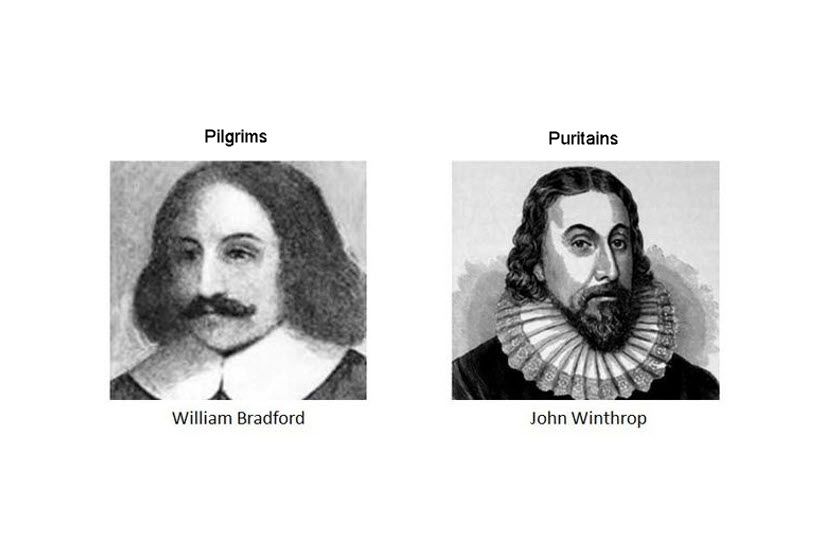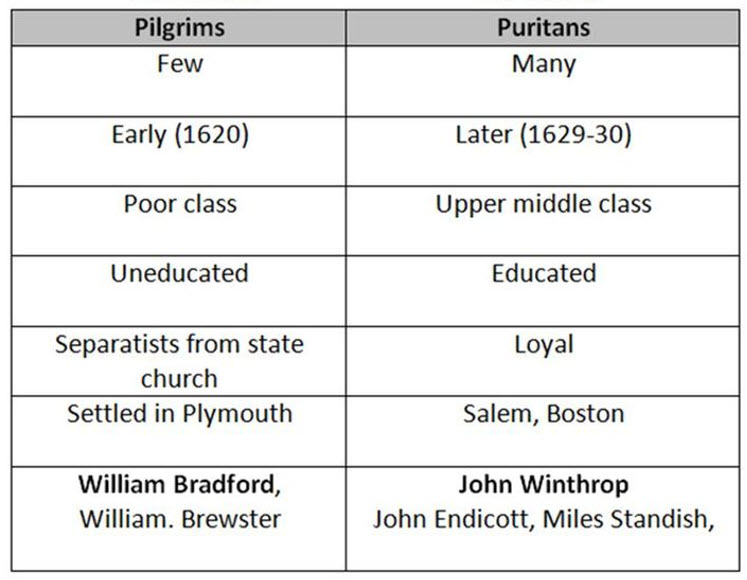
For you were called to freedom, brethren; only do not turn your freedom into an opportunity for the flesh, but through love serve one another. Galatians 5:13
As we move through the month of November, setting our clocks back to regular time, ending professional baseball for another year, pausing to remember our veterans on the 11th, filling shoeboxes or grocery bags, and doing all the preparing for Thanksgiving, I’d like to raise the question “Who were the Puritans and were they Pilgrims?”.
This past year I have been self-learning about our Puritan Fathers. But were they part of those brave men and women who landed on what is now known as Plymouth in 1620? No, no they weren’t. Well, what is the difference, and is it even important? Well, grab a comfy chair, a warm cup of coffee, tea or chocolate, and I will share what I know with you.
If you are “up” on your English history, you may recall a king named Henry VIII, who formed a new church, called the Church of England, because the Pope would not accept his marriage to Anne Boleyn. Their daughter, Elizabeth I, became queen (1558-1603) after Mary I ‘Bloody Mary’ (1516-1568) died. While Elizabeth I was in favor of the protestant movement, she also wanted to stay in favor with the Church of England. This meant that EVERYONE was to attend church – Church of England, that is. The Prayer Book, priests (not preachers), sign of the cross, confirmation and wedding rings were carried over from the Catholic traditions.
Two different groups arose over these differences. The first were Separatists, known later as Pilgrims. The second group, the Puritans, wanted to reform the Church from within. In fact, their belief was that we should ALWAYS be reforming the church because sin can enter at any time.
The Puritans valued education, had a passionate love for the Bible and good preaching. Some better-known Puritans were John Owen, John Bunyan, Richard Sibbes, William Gurnall, John Flavel, and my current favorite, Jeremiah Burroughs.
Meanwhile, the Separatists left England due to persecution, and moved to the Netherlands. But concern that the children were losing the English culture, sought to move to the Americas. They sailed in one ship, with about 102 passengers, but about 1 /2 died that first year. We all know the oft-told tale of their settling in Plymouth, the care given by the Wampanoag people, and the first Thanksgiving feast 400 years ago. By 1640, the colony increased to 2,400.
The Puritans, while dealing with persecution, had an easier time in England. So in 1630, 17 ships set sail from England, with over 1,000 passengers. By 1640, they were 20,000 strong.
Both the Pilgrims (separatists) and the Puritans (non-separatists) sought different freedom of religious practices than what the Church of England dictated, and they both wanted to live according to Biblical precepts, but they were otherwise distinct groups of people.

Note: Neither group wore black clothing except maybe on Sundays. The buckles were also not part of their dress- that style came in the 1700’s. Neither reformed the Church of England.